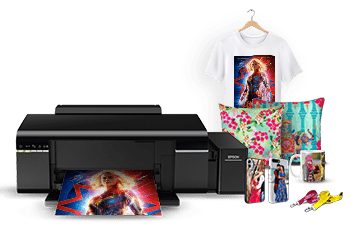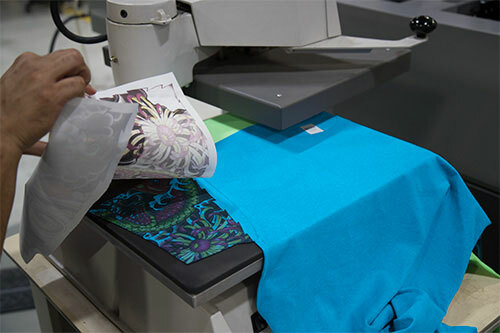Technologies in DTF Printing: How It's Reinventing the Industry
The fabric printing market is undergoing a significant transformation, driven by the cutting-edge innovations in Direct-to-Film (DTF) technology. With exceptional ink formulas, enhanced film and adhesive technologies, and the combination of automation, DTF printing offers lively, long lasting prints on a variety of fabrics, satisfying the boosting demand for modification.
Advancements in DTF Innovation
Progressing quickly, DTF (Direct-to-Film) printing innovation has actually undertaken considerable enhancements that are revolutionizing the fabric industry. One of one of the most noteworthy advancements is the improvement in print high quality. Modern DTF printers utilize sophisticated ink solutions that result in lively, resilient prints with high resolution and color accuracy. These inks are particularly crafted for compatibility with numerous material kinds, making sure regular high quality despite the product.

Furthermore, innovations in movie and adhesive modern technologies have improved the total application procedure. New movies offer much better flexibility and attachment, boosting the longevity and washability of the printed designs - DTF printing. This makes sure that the prints maintain their stability and vibrancy also after several laundries
Finally, environmental considerations have actually prompted the advancement of environment-friendly DTF remedies. Suppliers are progressively embracing lasting methods, such as making use of recyclable movies and water-based inks, aligning with worldwide efforts to lower the industry's environmental impact.
Benefits Over Typical Techniques
When contrasting DTF printing to standard methods such as screen printing and direct-to-garment (DTG) printing, several unique benefits arise. heat transfer vinyl printing. Among the most substantial advantages is its versatility in fabric compatibility. Unlike display printing, which commonly requires particular fabric kinds, DTF printing can be applied to a wider series of materials, consisting of cotton, polyester, and blends, without jeopardizing print quality
Another notable benefit is cost-effectiveness, specifically for tiny to medium-sized orders. Conventional screen printing comes to be financially viable only at greater volumes as a result of the configuration expenses entailed. In comparison, DTF printing gets rid of these arrangement expenditures, making it a lot more budget-friendly for smaller sized sets and one-off layouts.
Furthermore, DTF printing excels in toughness and washability. The prints generated are robust and preserve their integrity with numerous clean cycles, surpassing DTG prints that might fade or fracture in time. In addition, DTF printing uses faster turnaround times. Without the demand for substantial setup, designs can be published and transferred in a portion of the moment required for screen printing.

Enhanced Layout Capacities
DTF printing supplies improved layout abilities that establish it apart from conventional printing techniques. The process includes printing a layout onto an unique movie, which is after that transferred to textile.
Additionally, DTF printing sustains a wide range of textiles, consisting of cotton, polyester, blends, and also non-textile substratums. look here This flexibility opens up doors for imaginative applications in varied markets such as fashion, home design, and advertising products. Unlike screen printing, which can be limiting due to shade separation and pattern development, DTF printing simplifies the process, making multi-color and photo-realistic styles more obtainable.
Additionally, DTF printing succeeds in attaining consistent shade precision and vibrancy. In significance, DTF printing empowers designers to press the boundaries of imagination, providing visually spectacular results that were formerly unattainable.
Price and Time Efficiency
One of the noteworthy benefits of DTF printing lies in its cost and time efficiency, making it a preferred choice for numerous services. Unlike conventional methods that call for considerable financial investment in screens and arrangement times, DTF printing allows for direct application onto numerous products with minimal prep work.
In addition, DTF printing succeeds in generating short runs and personalized orders cost-effectively. The ability to generate premium prints without the requirement for large quantity dedications reduces waste and enhances resource allowance. This versatility is particularly helpful for small companies and startups that may not have the capital to buy large-scale manufacturing runs.
In regards to functional effectiveness, DTF printing's structured workflow boosts general productivity. The modern technology's compatibility with a large array of fabrics and substrates even more broadens its application extent, lowering the demand for multiple printing systems. Subsequently, services can attain a faster turn-around time, boosting customer satisfaction and competition out there. Therefore, DTF printing stands apart as a transformative option in the printing sector.
Future Trends in DTF Printing
Expecting future patterns in DTF printing exposes a landscape noted by quick technological advancements and increased market demand (screen printing). One significant trend is the integration of man-made intelligence (AI) and artificial intelligence formulas to optimize print high quality and enhance operations. AI-driven systems can forecast prospective concerns and readjust settings in real-time, making sure consistently top notch outcome
Furthermore, advancements in lasting materials and environment-friendly inks are anticipated to gain traction. As ecological look here issues end up being a lot here are the findings more pressing, the sector is likely to see a shift in the direction of non-toxic and biodegradable inks, minimizing its environmental footprint.
Personalization and customization will certainly likewise play a crucial function. With the growing customer need for special, individualized products, DTF printing innovations are progressing to use more comprehensive and detailed modification options. This trend is supported by enhanced software application options that enable even more facility and creative layouts.
Lastly, the integration of DTF printing with various other digital systems and shopping solutions will certainly end up being more smooth. This connection will enable businesses to provide on-demand printing solutions straight to consumers, even more driving growth in the sector. These fads collectively highlight a future where DTF printing not only satisfies yet goes beyond the progressing demands of the marketplace.
Verdict

When contrasting DTF printing to typical techniques such as display printing and direct-to-garment (DTG) printing, numerous distinctive advantages arise. Unlike screen printing, which typically requires details material kinds, DTF printing can be applied to a wider array of products, including cotton, polyester, and blends, without compromising print quality.
DTF printing uses enhanced design capacities that set it apart from typical printing methods. Therefore, DTF printing stands out as a transformative solution in the printing industry.
Technologies in DTF printing dramatically enhance the textile printing sector by giving superior print top quality, efficiency, and versatility.